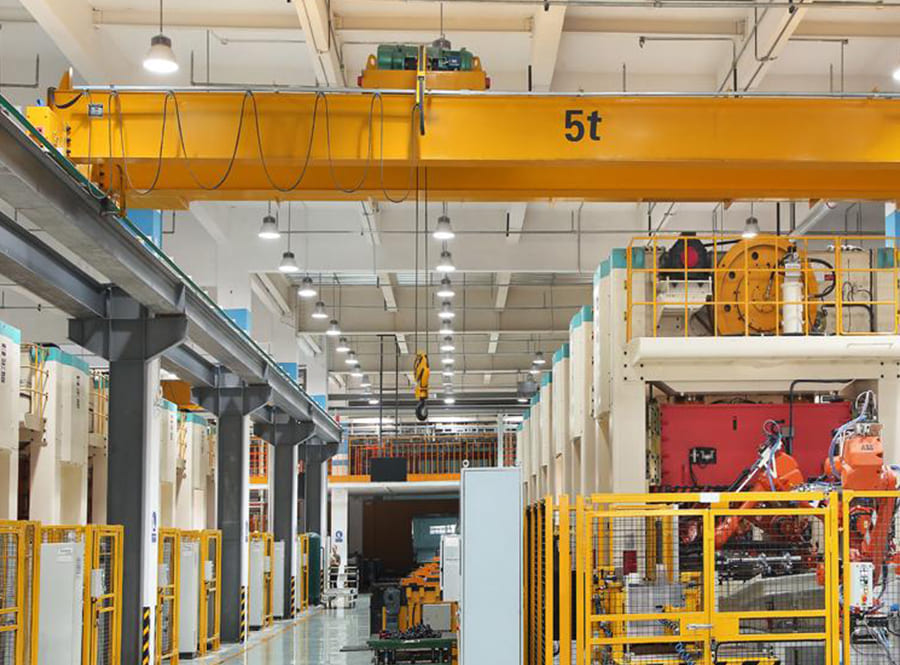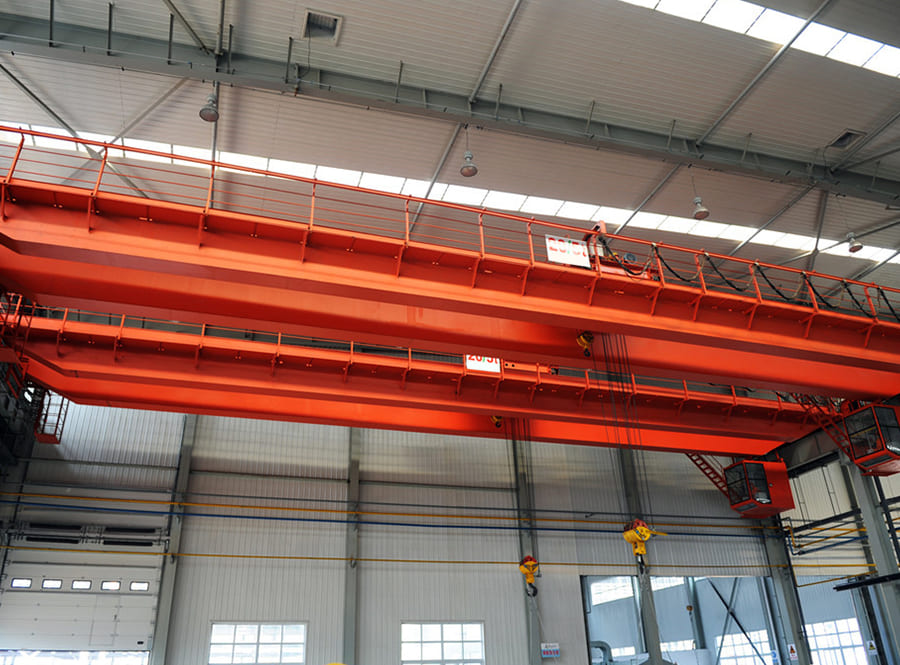SEVENCRANE underhung monorail crane is a major lifting and transportation equipment in the production logistics process, and its utilization efficiency is related to the production rhythm of the enterprise. At the same time, bridge cranes are also dangerous special equipment and may cause harm to people and property in the event of an accident.
The driver of the industrial underhung monorail crane is the most active and critical factor in the use of the overhead crane. The driver’s ability to operate the overhead crane is very important and is a major issue directly related to the company’s efficiency and safe production. The author summarizes his own practical experience in operating bridge cranes and puts forward the following operating experience based on the characteristics of bridge cranes.
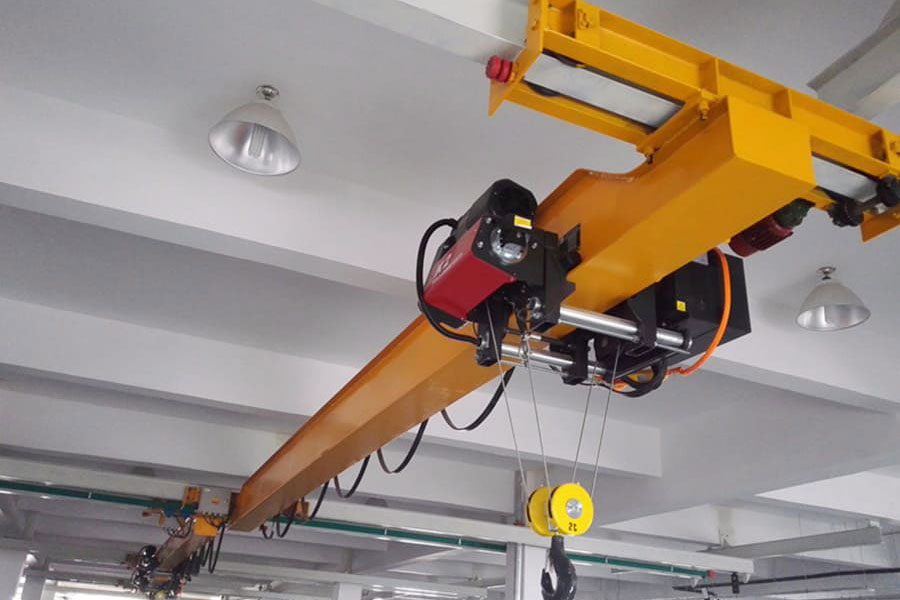
Master the characteristics of equipment and work objects
To correctly operate a bridge crane, you must carefully master key elements such as the equipment principle, equipment structure, equipment performance, equipment parameters, and operating process of the equipment you are operating. These key factors are closely related to the use and operation of this equipment.
1. Opanuj zasadę sprzętu
Dokładne zrozumienie zasad jest warunkiem wstępnym i podstawą dobrego działania sprzętu. Tylko wtedy, gdy zasady zostaną jasno i dogłębnie opanowane, podstawy teoretyczne zostaną ustanowione, zrozumienie może być jasne i głębokie, a poziom operacyjny może osiągnąć pewną wysokość.
2. Ostrożnie opanuj konstrukcję sprzętu
Dokładne opanowanie konstrukcji sprzętu oznacza, że musisz zrozumieć i opanować główne elementy konstrukcyjne suwnicy pomostowej. Żurawie mostowe to sprzęt specjalny, a ich konstrukcje mają swoją specyfikę, którą należy dokładnie zrozumieć i opanować. Dokładne opanowanie konstrukcji sprzętu jest kluczem do zapoznania się ze sprzętem i umiejętnego kontrolowania go.
3. Ostrożnie opanuj wydajność sprzętu
To carefully grasp the performance of the equipment is to master the technical performance of each mechanism of the top 10 underhung monorail crane for sale, such as the power and mechanical performance of the motor, the characteristic braking state of the brake, and the safety and technical performance of the safety protection device, etc. Only by mastering the performance can we better take advantage of the situation, scientifically control the equipment, delay the deterioration process, and prevent and reduce the occurrence of failures.
4. Uważnie opanuj parametry sprzętu
Dokładne opanowanie parametrów sprzętu oznacza, że należy zrozumieć i opanować główne parametry techniczne suwnicy pomostowej, w tym rodzaj pracy, poziom pracy, znamionowy udźwig, prędkość roboczą mechanizmu, rozpiętość, wysokość podnoszenia itp. Parametry techniczne każdego elementu sprzęt często się różni. W zależności od parametrów technicznych sprzętu istnieją różnice w jego działaniu. Dokładna znajomość dokładnych wartości parametrów każdej suwnicy ma kluczowe znaczenie dla dokładnej obsługi sprzętu.
5. Ostrożnie opanuj proces pracy
Carefully mastering the operating process means mastering the steps and processes of the production operations served by the suwnica, and striving for the best design and reasonable operation of the lifting and transportation procedures used in various processes. Only by proficiently mastering the process flow can we master the operation rules, be confident and operate freely, so as to improve work efficiency, safety and reliability.
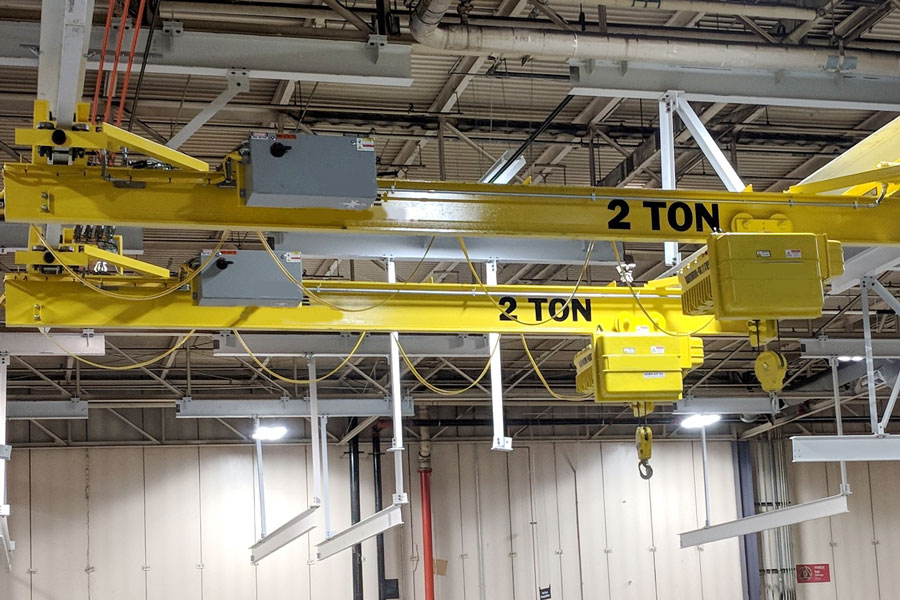
Grasp the status changes of the equipment
The warehouse underhung monorail crane cost is special equipment, and the operation and operation must ensure the technical status and intact condition of the bridge crane. During the operation of bridge cranes, they are affected by factors such as production conditions and environment. The functions and technical status determined during the original design and manufacturing may continue to change and be reduced or deteriorated. Therefore, the driver must carefully grasp the status changes of the equipment, conduct good operation control of the bridge crane, and perform maintenance and inspections carefully to prevent and reduce failures.
1. Uważnie śledź zmiany stanu sprzętu
Sprzęt wymaga starannej konserwacji. Regularnie czyść, czyść, smaruj, reguluj i dokręcaj wszystkie części suwnicy pomostowej zgodnie z wymaganiami systemu konserwacji. Rozwiązuj w odpowiednim czasie różne problemy, które mogą się pojawić, poprawiaj warunki pracy sprzętu, eliminuj problemy w zarodku i unikaj niepotrzebnych strat. Praktyka pokazuje, że żywotność sprzętu zależy w dużej mierze od stopnia konserwacji.
2. Uważnie śledź zmiany stanu sprzętu
Uważnie śledź zmiany stanu sprzętu i bądź w stanie sprawdzić sprzęt. Zrozumienie i opanowanie części dźwigu pomostowego, które wymagają częstych przeglądów, oraz opanowanie metod i środków kontroli części.
3. Skills in monitoring equipment through senses
Skills in monitoring equipment through the senses, i.e. seeing, hearing, smelling, touching and feeling. “Visual” means to use vision to observe the surface of the equipment in order to detect intuitive defects and failures. “Listening” means relying on hearing to detect the status of the device. The driver operates in the cab and cannot see the operating conditions of the equipment on the bridge. Hearing becomes an important auxiliary safety means. When electrical appliances or mechanical equipment are operating normally, they generally only emit very light harmonic sounds, but when they are malfunctioning, they will make abnormal noises. Experienced drivers can determine the approximate location of the fault based on the different changes in the sound. Therefore, identifying diseases by sound should be one of the internal skills of a driver. “Smell” means relying on the sense of smell to detect the status of the device. The electrical coil of the bridge crane catches fire, and the brake pads smoke and emit a pungent odor that can be smelled from a distance. If you find any peculiar smell, you should stop the vehicle immediately for inspection to avoid causing fire or other major equipment accidents. “Touch” is to diagnose the abnormal status of the equipment through hand feeling. Drivers sometimes encounter abnormal conditions in equipment and are able to diagnose and determine the cause of the malfunction. “Feeling” here refers to feel. Drivers will feel information from all aspects when operating, and experience will tell you what is normal and what is abnormal. When drivers find that they feel different from usual at work, they should immediately trace the source to avoid future troubles.
Communicate carefully with ground support personnel
The use of operating bridge cranes to complete lifting tasks requires the cooperation of many people such as drivers, commanders, and rigging personnel. Sometimes its operating scope also includes other equipment and operators, so as a driver, you must carefully work with the ground. Communicate and cooperate well with the personnel. The work objects, equipment status, work instructions, and operating environment must be confirmed before proceeding.
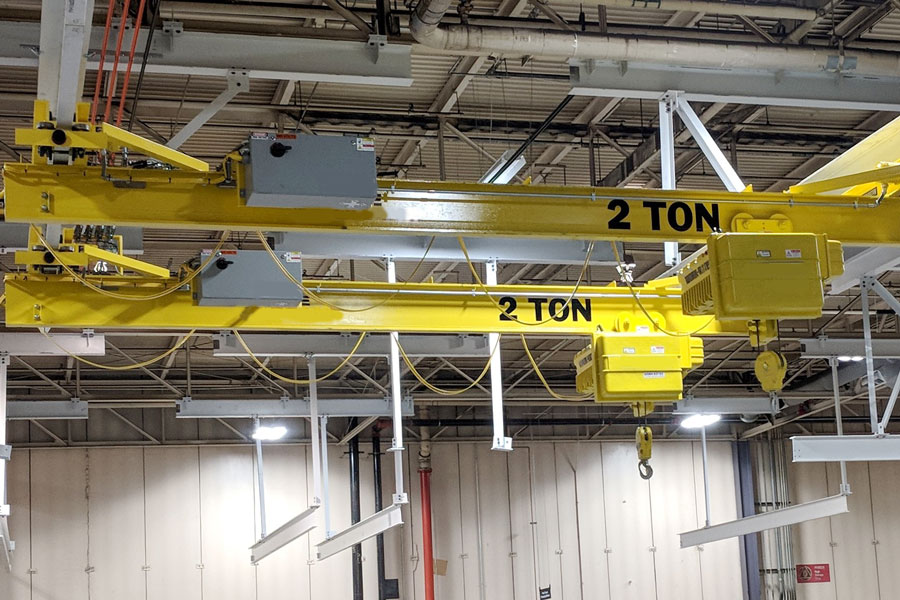
The driver must confirm the command language with the ground personnel before operating. If the command language is not agreed upon, the operation cannot be carried out. The driver must concentrate when operating and operate according to the commander’s signals. Before each operation, the driver should ring the bell to remind the personnel at the operation site to pay attention. At the same time, pay attention to the situation around the lifting objects. No one is allowed to stay under the hoisted object, under the arm, or in the area where the hoisting weight rotates. When the line of sight between the driver and the hoisted object may be blocked during hoisting, the driver should carefully inspect the on-site environment within the hoisting range and confirm the hoisting path of the hoisted object before hoisting. During the hoisting process, the signal contact with the commander should be strengthened.
At the same time, the commander should stand within the driver’s line of sight to give commands to avoid hoisting safety accidents due to blocked sight. If there are only drivers and hookers working on site, the driver must work closely with the hookers and work in unison. When moving and lifting heavy objects, you should only follow the signal given by the hooker. However, no matter who sends the “stop” signal, you should stop immediately.









